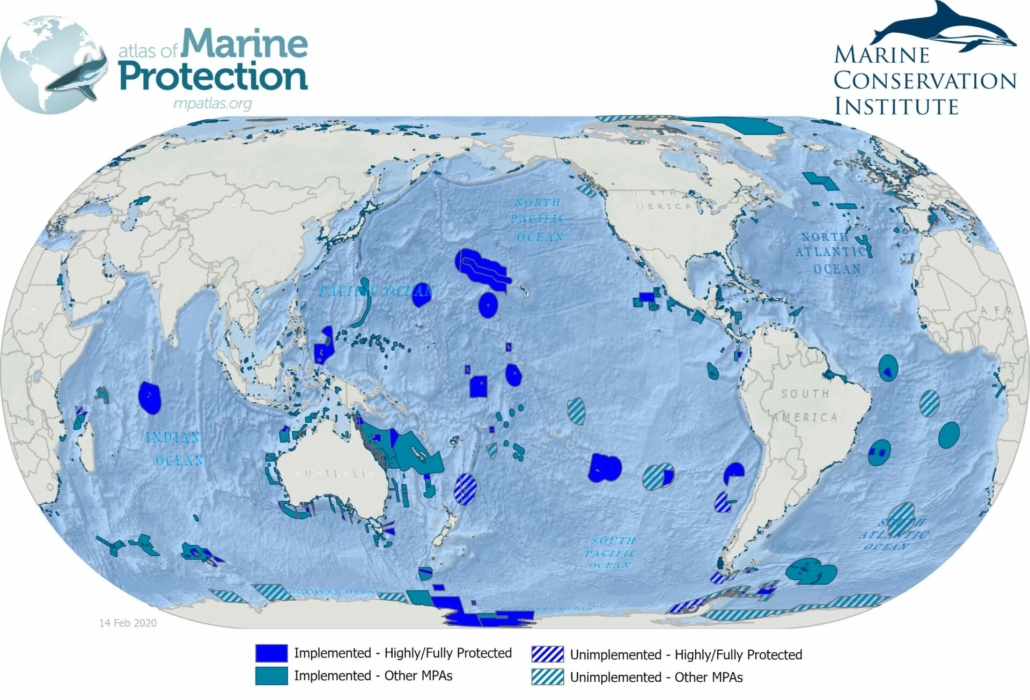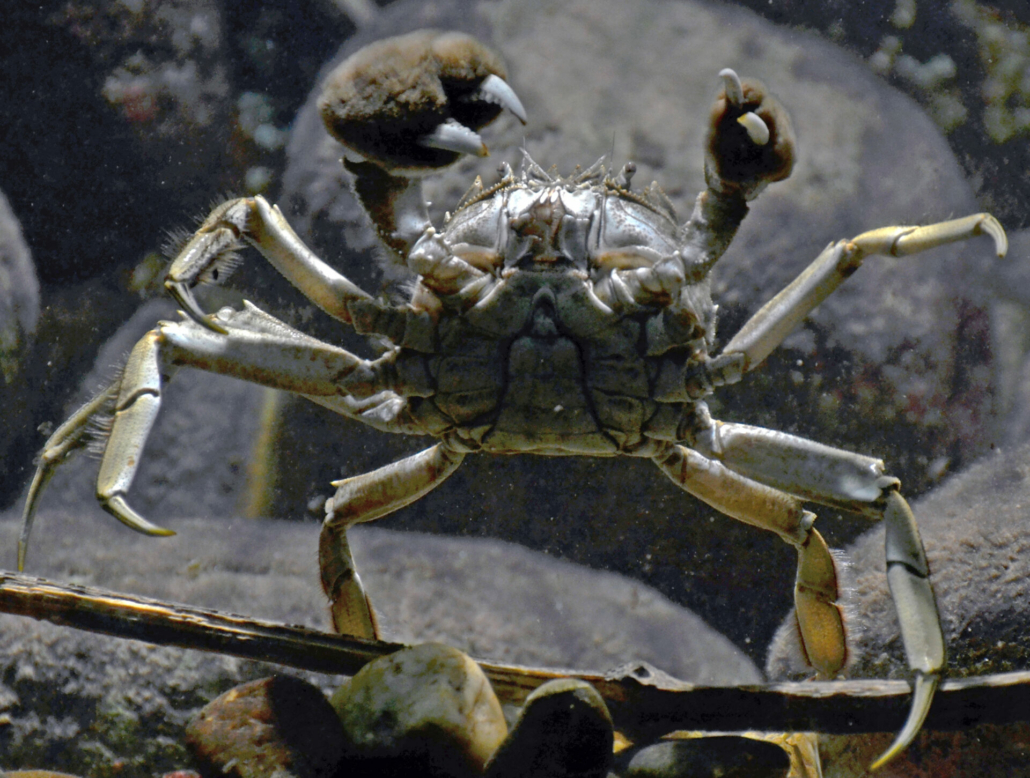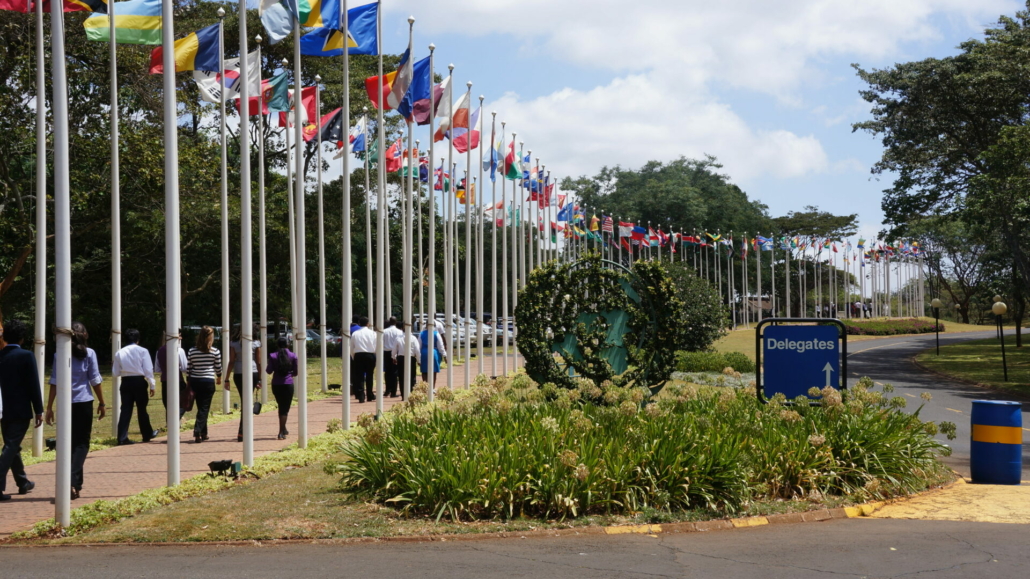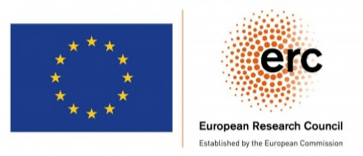An Ocean of Possibilities: Marine Biodiversity in the Post-2020 Global Biodiversity Framework
The Post-2020 Global Biodiversity Framework (GBF) is an “ambitious plan” (first draft GBF, Annex, para. 1) to ensure that “biodiversity is used sustainably in order to meet people’s needs” (first draft GBF, Annex, para. 6). The framework has 21 action-oriented targets that should be achieved by 2030 in order to reach the four long-term goals for 2050 and it should be adopted by the 15th Conference of the Parties (COP) of the Convention on Biological Diversity (CBD).
States have negotiated the GBF in the corresponding Open-Ended Working Group (WG2020), which held its first and second meetings in person in 2019 and 2020, and its third meeting in two parts: an online part in 2021 and a hybrid part in 2022. In this blog post, we focus on marine issues discussed in the second part of the third meeting (WG2020-3), which we attended in person and online at the same time.

Inside the venue: CICG – The International Conference Center Geneva. Source: own image/ethnographic data
Hybrid meetings and the study thereof
The meetings of the second part of the WG2020-3 were hybrid: state delegates could give statements and text proposals on-site or online, as well as support or contest interventions of other states and NGOs online in real time if they had to isolate for 5 days because their daily COVID test was positive. This was also the case of delegations that could not attend the meetings in person due to travel restrictions or that could attend some meetings in person and others online.
In case the daily COVID test of a non-state actor was positive, the corresponding delegate could observe the negotiations in real time through the digital platform used by the CBD (Interactio) but could not provide statements. Non-state actor’s participation in hybrid meetings was then meaningful if they were on-site to provide statements and lobby. In sum, hybrid meetings turned negotiations into a more participatory process for states but not for non-state actors.
Two team members observed the meetings on-site and online simultaneously to study marine governance in practice (see Campbell et al., 2014; Vadrot et al., 2021). As registered observers, we had access to the face-to-face meetings and the online platform where these were live-streamed. This enabled us to observe the proceedings in real time both in Geneva and from home (Vienna).

Our seat in the WG2020-3. Source: own image/ethnographic data
Marine Issues in the Post-2020 Global Biodiversity Framework
Marine issues in general are part of the long-term goals for 2050 and of targets 1-9, 11, 12, and 18-20. In this blog post, however, we focus on the discussions related to marine conservation and sustainable use: We address goals A and B, as well as targets 1-8.
Goals A and B: ecosystems and cultural values
Goal A aims to achieve the conservation of ecosystems, species and genetic diversity. States of the Global North and South supported to enhance the connectivity and integrity of all ecosystems (Argentina, Australia, Costa Rica, Egypt, Perú, South Africa, UK). However, Colombia and the EU supported to enhance ‘managed ecosystems’ as well, which are ecosystems altered and overseen by humans (Antle & Capalbo, 2002) like those embedded in aquaculture. A possible explanation for this proposal lies on that incorporating managed ecosystems would facilitate states’ compliance with the GBF as they could focus on conserving economically exploited ecosystems, such as fisheries. Additionally, Costa Rica and Egypt proposed to include marine ecosystems. This might be due to that the CBD has historically focused on terrestrial biodiversity, leaving marine issues aside as exemplified by the short time allocated to marine discussions in the second part of the 24th meeting of the Subsidiary Body on Scientific, Technic and Technological Advice of the CBD (ENB, 2022).

Aquaculture pond. Source: https://www.flickr.com/photos/theworldfishcenter/8491852388
Goal B pursues to achieve the sustainable use of biodiversity. Disagreements in these discussions focused on whether to include cultural values attached to nature by keeping the concept of ‘nature’s contributions to people,’ which considers cultural values, or replacing it with ‘ecosystem services,’ which fails to consider cultural values attached to nature.
States supporting the recognition of such values included Australia, Bolivia, Japan, Namibia, New Zealand, Norway, Palestine, and Saint Lucia. All of these states have Indigenous People and Local Communities (see Cobb, 2020; FAO, 2020; Harden-Davies et al., 2020; IWGIA, 2022; Mulalap et al., 2020; Murray, 1996; Nursey-Bray & Jacobson, 2014). States avoiding the recognition of cultural values attached to nature included China, Costa Rica, Ecuador, EU, Iran, Mexico, the Russian Federation, and Switzerland. This might be due to that states pursue to protect economic interests. In the spirit of compromise, Chile proposed to add “nature’s contributions to people, including ecosystem services,” enabling the accommodation of diverging interests.
Scope of targets 1 and 3
States did not seem to agree on whether targets 1 and 3 would apply to both national and international waters. Target 1 aims to ensure that states implement management plans for human activities in land and sea areas; and target 3 pursues to guarantee that at least 30% of land and sea areas are conserved through terrestrial or marine protected areas by 2030.
With regards to target 1, the United Kingdom (UK), for instance, indicated that the target would apply to both national and international waters, while Brazil highlighted that the target would only apply to 50% of national waters. Regarding target 3, the UK and Turkey indicated that the target would apply to both national and international waters, while Brazil highlighted that the target would only apply to national waters.
On the one hand, recognizing that the CBD can regulate activities in international waters would facilitate states’ compliance with both targets. States could protect less than 30% of their national waters if the targets apply to international waters as well, enabling continuous fishing in over 70% of national waters. On the other hand, limiting the scope of the targets to national waters would limit the influence of the GBF in the ongoing negotiations for an agreement on the conservation and sustainable use of marine biodiversity in areas beyond national jurisdiction, where states discuss the implementation of marine protected areas (MPAs).

Map of national and international waters. National waters are white and international waters are colored blue. Source: https://commons.wikimedia.org/wiki/File:Internationalwaters.png
Type of spatial measure in target 3
State actors from the Global North (Canada, EU) and Global South (Argentina, Armenia, Jordan, Philippines, South Africa, and Turkey) supported the inclusion of MPAs and other effective area-based conservation measures (OECMs), which aim at the long-term in situ conservation of ecosystems while also safeguarding socioeconomic activities (CBD COP dec. 14.8, para. 2). Namibia, for its part, opposed the inclusion of OECMs as these could undermine the target. This might be due to the protection of socioeconomic activities in OECMs.

Global map of MPAs. Source: https://commons.wikimedia.org/wiki/File:GlobalMPAs_logo_2020.jpg
What species should we protect under targets 4, 5 and 6?
While target 4 focuses on the recovery and conservation of species, states failed to agree on what specific species the target would address. India proposed to focus on “wild species,” Gabon on “threatened species,” and Jordan on “wild and threatened species.” A potential explanation for these differing preferences might lie in the capacities of these states to ensure the recovery and conservation of threatened species by 2030. According to the website Animalia, Gabon and Jordan have 37 and 31 threatened species respectively (Animalia, n.d.a; n.d.b), while India has 280 (Animalia, n.d.c).

Leatherback sea turtle: one of the threatened species in Gabon according to Animalia. Source: https://commons.wikimedia.org/wiki/File:Leatherback_Sea_Turtle_%2817665415746%29.jpg
Ecuador and Indigenous Peoples and Local Communities proposed to focus on “wild and domesticated species”; while Brazil, Colombia and Korea preferred to focus on “native species and domesticated species.” A focus on wild species might enable state and non-state actors to perform practices for recovering and conserving all animals. A focus on native species would enable state actors to avoid protecting wild and alien species, such as particular species of fish. In other words, both preferences represent opportunities for states to avoid incurring in obligations that firstly, they cannot fulfil due to lack of capacity or secondly, they are not willing to fulfil due to economic interests.
The sustainable harvesting, trade and use of wild species, however, is addressed in target 5. Argentina, Australia, Canada and New Zealand proposed to include fisheries and coastal and marine biodiversity in this target, while the EU opposed the inclusion of marine species. As explained above, the need to refer to marine biodiversity explicitly might be due to that the CBD has focused on terrestrial biodiversity mainly. A potential explanation for the EU’s behavior might be that its member states have different positions with regards to including marine species in target 5, in which case a reference to wild species in general would accommodate the diverging interests inside the EU.
Jordan, Sri Lanka and Sudan proposed to include “wild species harvesting,” “capture breeding” and “wildlife trade” in target 5. These activities constitute established economic practices in these countries. A focus on sustainable wildlife business would support their economies and simultaneously help achieve this target. Additionally, New Zealand and Fiji proposed to refer to “all species.” This might be due to that a broader focus would give states the possibility to accommodate their interests by enabling them to determine on their own what species they will manage sustainably.

Container with eels – a wild species. Source: https://www.rawpixel.com/search/eel?page=1&sort=curated
Similar to targets 4 and 5, states failed to agree on what species they would manage under target 6. On the one hand, the EU and UK proposed that this target tackled “alien species” in general, instead of “invasive alien species.” Invasive alien species are “species that are introduced, accidentally or intentionally, outside of their natural geographic range and that become problematic” (IUCN, n.d.) as they are “one of the main drivers of biodiversity loss, due to their ability to disperse and cause negative effects on native species and the environment” (NOBANIS, 2015, p. 7). The elimination of the word “invasive” could derive in the interpretation of alien species as those species that are foreign to a particular ecosystem and do not contribute to biodiversity loss. Such interpretation would enable the EU and UK to implement policies that fail to differentiate between the invasive and non-invasive character of alien species.
On the other hand, Colombia indicated that the target could focus on “species with high invasive potential” and South Africa proposed to concentrate on “harmful species.” Such species classifications would enable countries to determine on their own what species they would manage, according to their interests and capabilities.

Lionfish: Invasive alien species in the Atlantic and Caribbean according to the World Resources Institute (n.d.). Source: https://commons.wikimedia.org/wiki/File:Red_lionfish_near_Gilli_Banta_Island.JPG
Furthermore, India proposed to add freshwater and marine species to this target. Aquatic ecosystems in India have the highest number of invasive alien species compared to other ecosystems according to a publication of the Indian Centre for Biodiversity Policy and Law (Sandilyan et al., 2019). A potential explanation of India’s proposal could be that the country might be implementing policies to manage aquatic invasive alien species. Thus, India might be trying to export national policies to the international level, facilitating its own compliance with target 6.
Numeric figures
Goal A and targets 2, 3, 6, 7, and 8 contained numeric figures over which states provided divergent views. In general, Global North actors supported the use of numeric elements in order to measure progress towards the targets; while Global South actors opposed numeric components arguing that they could not measure progress in those terms. The discussions about target 6 exemplify this divide. Global North actors (EU, Israel, Norway, and UK) preferred to reduce the introduction and establishment of invasive alien species “by at least 50 percent”; while Global South actors (Argentina, Bolivia, Brazil, Colombia, Gabon, and United Arab Emirates) preferred to delete this numeric figure.

Chinese mitten crab (Eriocheir sinensis): Invasive alien species in the European Union according to the European Commission (2021). Source: https://commons.wikimedia.org/wiki/File:Zoo_K%C3%B6ln_Eriocheir_sinensis_31122014_1_bis.jpg
As an alternative, Argentina, Dominican Republic, Guatemala, and Korea proposed to replace the percentage with “significantly decrease.” This qualitative evaluation of progress towards the target could accommodate diverging preferences by enabling states to measure progress on their own terms. It also implies that states can decide how much they can achieve, independently of whether this effectively increases the well-being of ecosystems.
Discussions about target 3 provide another example of diverging views with regards to numeric figures. States provided wide support for protecting 30% of land and ocean by 2030 through spatial measures due to the scientific evidence presented by the High Ambition Coalition. States supporting this numeric figure included Armenia, Canada, Colombia, Costa Rica, Egypt, India, Namibia, and Perú. Other countries, such as Cameroon, Paraguay and South Africa supported a qualitative assessment of their contributions to achieving target 3, while Turkey and Jordan opposed the numeric figure. A possible explanation for such a qualitative assessment or opposition to the numeric figure might lie in that these countries pursued to avoid being overburdened with the costs of environmental protection as they might lack the capacities to achieve the target by 2030.
What concepts should we apply in target 8?
States debated about what concepts to include in target 8: ‘ecosystem-based approach’ or ‘nature-based solutions’. On the one hand, ‘ecosystem-based approach’ lacks a definition provided by a legally-binding instrument (Kirkfeldt, 2019, p. 2). According to a technical report of the CBD (2016), ‘ecosystem-based approach’ is the use of biodiversity and nature as part of adaptation strategies to climate change. On the other hand, ‘nature-based solutions’ was recently defined by a resolution of the United Nations Environment Assembly (UNEA) as the protection and sustainable use terrestrial and aquatic ecosystems, which “address social, economic and environmental challenges effectively and adaptively, while simultaneously providing human well-being, ecosystem services, resilience and biodiversity benefits” (UNEP/EA.5/Res. 5, para. 1).
Brazil, Ecuador, and India supported the inclusion of the ‘ecosystem-based approach,’ which might be due to that its non-binding definition enables states to apply it on their own terms to facilitate their own compliance, for instance, by including aquaculture as an adaptation measure.
A wide range of Global North and South state actors (Australia, Colombia, Costa Rica, EU, Ghana, Indonesia, Korea, Mexico, New Zealand, Norway, Sri Lanka, and United Arab Emirates) supported the reference to ‘nature-based solutions.’ Although the resolution that defines this concept is most likely not legally-binding, it represents the general opinion of the highest United Nations (UN) body on environmental issues (UNEP, n.d.; see UN, 2022) and therefore has ‘more weight’ than a concept defined in a technical report, such as ‘ecosystem-based approach’. This ‘weight’ could explain the wide support provided for including ‘nature-based solutions’ in target 8.
Another potential explanation could be that ‘nature-based solutions’ is flexible enough for states to accommodate their diverging interests and facilitate compliance. Additionally, the concept is consistent with the 2030 Agenda for Sustainable Development, which the GBF is supposed to complement and support (first draft GBF, Annex, para. 8).
What is left for the fourth meeting of the WG2020 in Nairobi?
Delegates will face one main challenge across the whole GBF discussions: work together in the spirit of compromise in order to reach consensus on the goals and targets. This implies that states must be willing to reshape their preferences so that there is a general agreement on the obligations they will incur to conserve and sustainably use biodiversity. Core issues include the measurement towards progress, the level of ambition, and the different economic and technological capacities of states, as well as alternative understandings of biodiversity, among others.
In how far would the GBF protect nature if it is not ambitious enough? Or how would the GBF protect nature if it is so ambitious that states cannot comply with it? Delegates in Nairobi have the opportunity to shape our engagement with nature for a better future for both terrestrial and marine biodiversity. The world is in their hands.

Walk to the United Nations Office in Nairobi. Source: https://commons.wikimedia.org/wiki/File:UN_Headquarters,_Nairobi.JPG
References
Antle, J.M., Capalbo, S.M. (2002). Agriculture as a Managed Ecosystem: Implications for Econometric Analysis of Production Risk. In: Just, R.E., Pope, R.D. (eds) A Comprehensive Assessment of the Role of Risk in U.S. Agriculture. Natural Resource Management and Policy, vol 23 (pp. 243-263). Springer. https://doi.org/10.1007/978-1-4757-3583-3_12
Animalia. (n.d.a). Threatened Species of Gabon. https://animalia.bio/lists/country/threatened-species-of-gabon?page=1.
Animalia. (n.d.b). Threatened Species of Jordan. https://animalia.bio/lists/country/threatened-species-of-jordan?page=1
Animalia. (n.d.c). Threatened Species of India. https://animalia.bio/lists/country/threatened-species-of-india?page=1.
Campbell, L. M., Corson, C., Gray, N. J., MacDonald, K. I., & Brosius, J. P. (2014). Studying global environmental meetings to understand global environmental governance: Collaborative event ethnography at the tenth conference of the parties to the convention on biological diversity. Global Environmental Politics, 14(3), 1-20.
CBD Dec. 14.8, Protected areas and other effective area-based conservation measures (Nov. 30, 2018).
CBD. (2021). First Draft of the Post-2020 Global Biodiversity Framework. (CBD/WG2020/3/3). https://www.cbd.int/doc/c/914a/eca3/24ad42235033f031badf61b1/wg2020-03-03-en.pdf
Cobb, E. (2020). Japan’s forgotten indigenous people. BBC. https://www.bbc.com/travel/article/20200519-japans-forgotten-indigenous-people
Convention on Biological Diversity, Jun. 5, 1992, 1760 U.N.T.S. 79.
ENB. (2022). Geneva Biodiversity Conference Highlights: Friday, 25 March 2022. International Institute for Sustainable Development. https://enb.iisd.org/sites/default/files/2022-03/enb09771e.pdf
European Commission (2021). Report from the Commission to the European Parliament and the Council on the Review of the Application of Regulation (EU) No 1143/2014 of the European Parliament and of the Council of 22 October 2014 on the Prevention and Management of the Introduction and Spread of Invasive Alien Species. European Union. https://ec.europa.eu/environment/pdf/nature/invasive_alien_species_implementation_report.pdf
FAO. (2020). WECAFC Fishery Resources Report 2020. Saint Lucia Flyingfish fishery. FIRMS Reports. In: Fisheries and Resources Monitoring System (FIRMS) [online]. Updated [Cited 31 May 2022]. http://firms.fao.org/firms/fishery/906/en
Harden-Davies, H., Humphries, F., Maloney, M., Wright, G., Gjerde, K., & Vierros, M. (2020). Rights of nature: Perspectives for Global Ocean Stewardship. Marine Policy, 120, Article 104059. https://doi.org/10.1016/j.marpol.2020.104059
IUCN. (n.d.). Invasive Alien Species. Retrieved June 3, 2022, from https://www.iucn.org/regions/europe/our-work/biodiversity-conservation/invasive-alien-species?msclkid=28bac60cd0f211ec8246d9df83c67bdd.
IWGIA. (2022). The Indigenous World 2022 (M. Dwayne, Hrsg.; 36th Aufl.).
Kirkfeldt, T. S. (2019). An ocean of concepts: Why choosing between ecosystem-based management, ecosystem-based approach and ecosystem approach makes a difference. Marine Policy, 106, 103541. https://doi.org/10.1016/j.marpol.2019.103541
Mulalap, C. Y., Frere, T., Huffer, E., Hviding, E., Paul, K., Smith, A. Dr., & Vierros, M. K. (2020). Traditional knowledge and the BBNJ instrument. Marine Policy, 1-10. https://doi.org/10.1016/j.marpol.2020.104103
Murray, P. A. (1996). The fisheries of St. Lucia, West Indies. NAGA, 19(1), 41–44.
Nursey-Bray, M., & Jacobson, C. (2014). ‘Which way?’: The contribution of Indigenous marine governance. Australian Journal of Maritime and Ocean Affairs, 6(1), 27-40. https://doi.org/10.1080/18366503.2014.888136
NOBANIS. (2015). Invasive Alien Species: Pathway Analysis and Horizon Scanning for Countries in Northern Europe. TemaNord 2015:517.
Sandilyan, S., Meenakumari, B., Babu, C. R., & Mandal, R. (2019). Invasive Alien Species of india. National Biodiversity Authority, Chennai. http://nbaindia.org/cebpol/pub/iaslist.pdf
- (2022, March 23). Are UN resolutions binding?. Dag Hammarskjöld Library. https://ask.un.org/faq/15010
UNEP. (n.d). About the United Nations Environment Assembly. https://www.unep.org/environmentassembly/about-united-nations-environment-assembly#:~:text=The%20United%20Nations%20Environment%20Assembly%20was%20created%20in,on%20Sustainable%20Development%2C%20also%20referred%20to%20as%20RIO%2B20.
UNEP. Environmental Assembly. Res. 5, Nature-based solutions for supporting sustainable development (Mar. 2, 2022).
Vadrot, A. B. M. Langlet, A., Tessnow-von Wysocki, I. (2021a). Who owns marine biodiversity? Contesting the world order through the `common heritage of humankind´ principle. Environmental Politics, 31(2), 226-250. https://doi.org/10.1080/09644016.2021.1911442
World Resources Institute. (n.d.). Atlantic and Caribbean: Lionfish Invasion Threatens Reefs. https://www.wri.org/research/reefs-risk-revisited/atlantic-and-caribbean-lionfish-invasion-threatens-reefs


